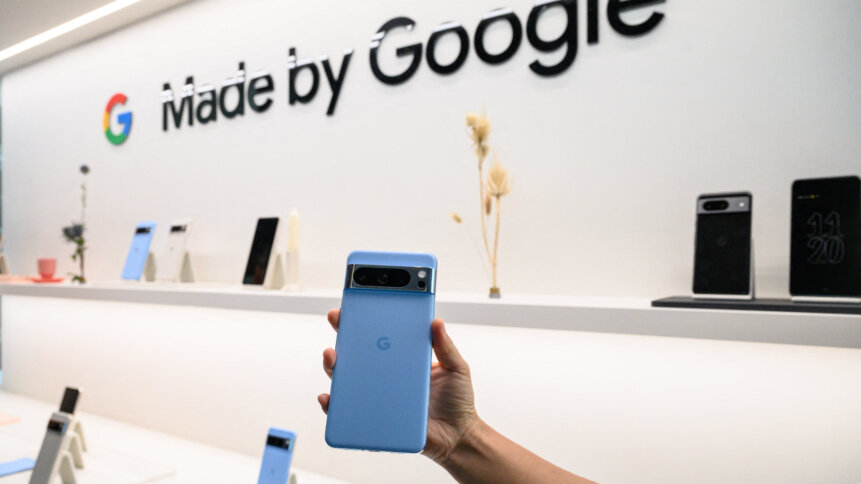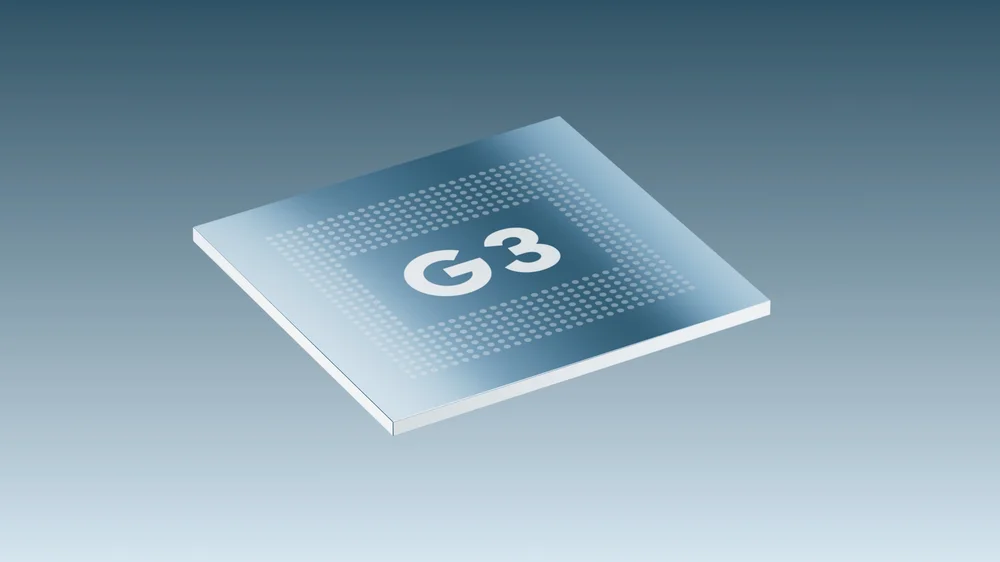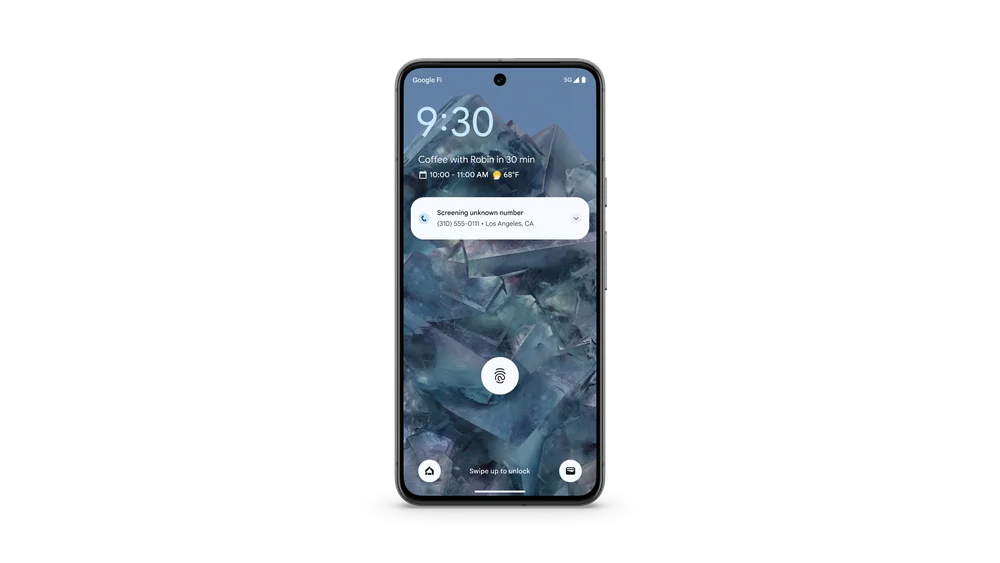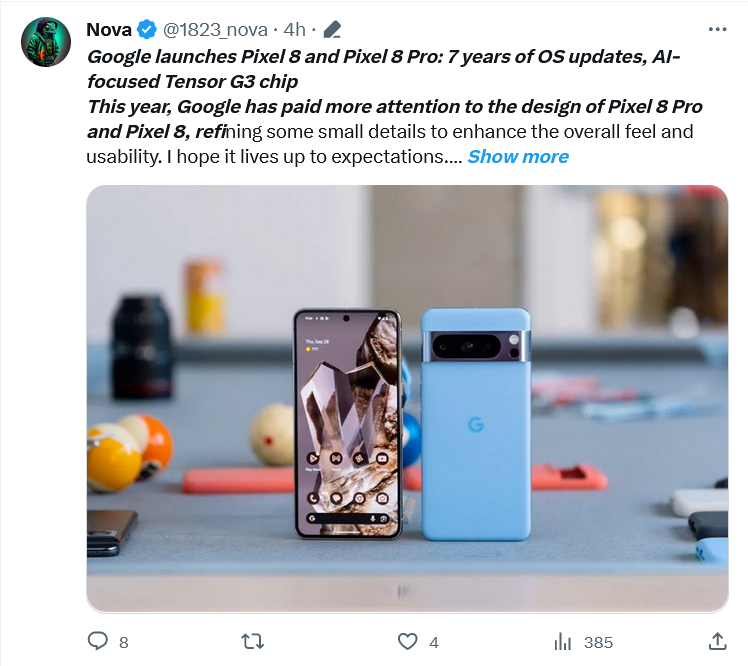The Tensor G3 chip behind Google’s Pixel 8

- Google emphasized that the Tensor G3 isn’t about traditional performance metrics but more about advancing the mobile computing experience.
- Google claims it is the most powerful Pixel chip so far.
- The Tensor G3 is notably more complex than the chips that powered the Pixel 6 and 7.
For many, one of the best Android phones in the market has always been Google’s Pixel. Especially since the tech giant’s in-house Tensor processor debuted on the Pixel 6, focusing on enhanced imaging and machine learning (ML) capabilities rather than game-changing raw power. This week, Google unveiled how it upped its ante with the third generation of its system-on-chip (Soc) — the Tensor G3.
“To bring the transformative power of AI to your everyday life, we need to ensure you can access it from the device you use daily,” Google explained in its latest blog posting. Considering how AI and machine learning (ML) are at the core of what Google does, the focus of the tech giant has always been in its chip.
The Tensor chipset is a significant element contributing to the Google Pixel experience. The Tensor SoC has never claimed the title of the fastest chip, but Google believes it has always been capable enough to drive fluid UI operation and Google’s “super-cool AI-and machine learning-powered tricks.” The Tensor G3 debuted with the Pixel 8 and Pixel 8 Pro.

Google’s third-generation Google Tensor G3 chip brings the latest in AI to the Pixel 8 and Pixel 8 Pro.
Google highlighted that it is “the most powerful Pixel chip, to date. The idea was to build the Pixel 8 smartphones with AI at the center for a more helpful and personal experience. Historically, with each flagship smartphone release from 2021’s Pixel 6 series, Google has debuted a new Tensor processor.
“Our third-generation Google Tensor G3 chip continues to push the boundaries of on-device machine learning, bringing the latest in Google AI research directly to our newest phones: Pixel 8 and Pixel 8 Pro,” the company announced. The main selling point of the latest mobile processor is that it has more AI and machine learning capabilities, letting users crunch more data on the device itself and in the cloud.
“Compared to the first generation of Tensor on Pixel 6, our latest phones run more than twice as many machine learning models on-device. The models themselves are also more sophisticated.

Features to help you save time and get things done. Source: Google
“That’s a massive jump in a short time, and it means that machine learning models now enhance just about every aspect of Pixel’s user experience. And that’s just the beginning,” Google said in a blog posting.
One of the primary factors driving the gradual increase in processor performances is the ability of chip manufacturers to shrink the processor’s process node, enabling them to incorporate more transistors. Various media reports indicated that Google has upgraded to a 4nm process node for the Tensor G3, making it smaller and more efficient than the 5nm node on the Tensor G2.

The Tensor G3 – powering the new Pixel 8.
The upgrade, if proven true, explains the improved performance in the Pixel 8 phones, as claimed by Google. What’s more, with improved AI, Google said its ‘Call Screen’ feature helps users receive 50% fewer spam calls on average. “It will silently answer calls from unknown numbers with a more natural-sounding voice to engage the caller. It’s also smart enough to separate the calls you want from those you don’t. And soon, Call Screen will suggest contextual replies for you to tap to quickly respond to simple calls, like appointment confirmations, without having to answer the phone,” Google added.
Tensor G3 and generative AI
Google claims that on-device generative AI is complex: “150 times more complex than the most complex model on Pixel 7 just a year ago.” To overcome that, Google’s latest custom chip was made. “Tensor G3 is up for the task, with its efficient architecture co-designed with Google Research. With our partnership with Google DeepMind, we have a unique opportunity to bring some of those generative AI capabilities to Pixel,” the search engine behemoth noted.
Google also claims that the Tensor G3 is hard at work with Pixel’s speech and natural language understanding. That would mean more effortless conversations with Google Assistant. “You can speak at your own pace — it even understands pauses and “ums.” We combined Google’s state-of-the-art speech recognition with server-quality natural language understanding,” it added.
In short, the Pixel 8 is the first phone to use the same text-to-speech model that Google uses in data centers. That allows users to use Pixel to read web pages aloud and even translate them into a different language.
The rise and rise of Pixel’s camera quality
More camera improvements. Source: Google
For many years, Google’s smartphones have been best known for their camera, and as some would say, if the smartphone sells, it’s mainly due to that feature. The magic has always been in the algorithms. Google always addresses the physical limitations of its cameras with better image processing.
While most smartphones in the market have a second or third lens, Google has trained machine learning/deep learning (ML/DL) algorithms. With the Pixel 8 and Pixel 8 Pro, the camera pipeline was optimized, and Google built ML algorithms directly into the silicon, making Live-HDR capable of capturing greater detail with improved colors, contrast, and dynamic range.
“Recording a video is a perfect example of this, where every part of our system on a chip (SOC) is used, and every part benefits from the chip-wide revamp. Combining this with new camera sensors, machine learning models, and new camera software gives you the best video experience ever on a Pixel — all while using less power,” Google said.
Titan M2 security chip for the latest Pixels
Google initiated the development of its proprietary Tensor SoC with the Pixel 6 series. However, that wasn’t the search giant’s initial foray into custom smartphone silicon. The first instance was the Pixel 2’s Pixel Visual Core. The subsequent generation saw the introduction of the Titan M hardware security module in Pixel 3 devices.
Then came 2021, when Google introduced the Titan M2. That security chip has since become a notable feature in Google phones, including the Pixel 7 series and Pixel 7a, often serving as a selling point. In the latest series of Pixel 8 smartphones, Google said Tensor G3 has the Tensor security core built-in, and it works with the Titan M2 security chip, making Pixel even more resilient to sophisticated attacks.
Google opted for in-house development of the Titan M2 to have complete control over its functionalities. The Titan M2 serves as a specialized security chip integrated into both Pixel 6 and Pixel 7 series smartphones. It’s also in other Google devices, such as the Pixel Tablet. This chip is built upon the RISC-V CPU architecture and includes its independent memory, RAM, and cryptographic accelerator components.
In that sense, Google said Tensor G3 continued the company’s tradition of keeping its phones private and secure. “Thanks to new machine learning advancements, Face Unlock on Pixel 8 now meets the strongest Android biometric class and can be used for banking app sign-in and payment apps like Google Wallet.”
Take-up of the Pixel 8 is likely to be strong, particularly driven by the new AI functionalities made practical by the 4nm process node of the Tensor G3.











